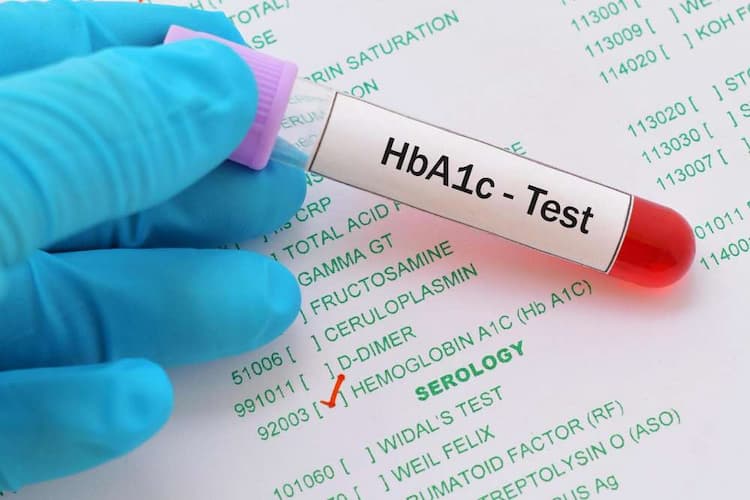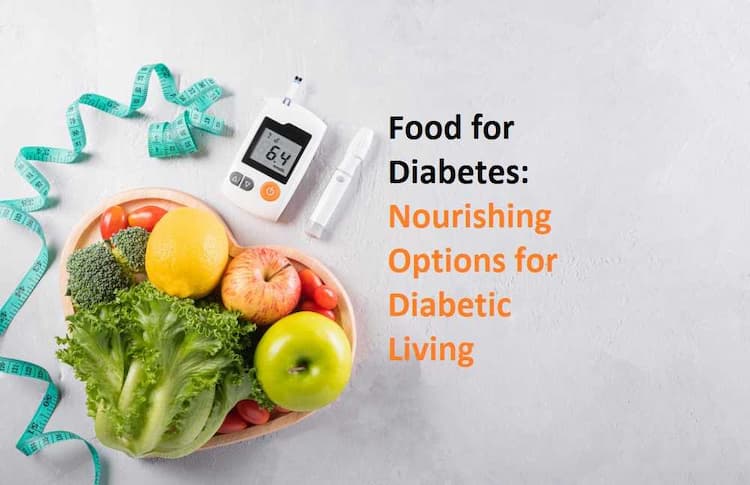Prediabetes - all you need to know about it

Medically Reviewed By
Dr. Ragiinii Sharma
Written By Dr. Ragiinii Sharma
on Dec 11, 2022
Last Edit Made By Dr. Ragiinii Sharma
on Mar 15, 2024

Prediabetes is a serious health concern that is a warning sign of type 3 diabetes. If you are pre-diabetic, then it means that you are a borderline diabetic and, if not taken care of, can develop type 2 diabetes. It is necessary to get a regular checkup to know about your prediabetic levels; however, diagnosis can seem scary, but it is a chance to control your health before any serious consequences. The primary step to managing Prediabetes is to understand what it is and what the levels are. The condition can offer long-term damage, especially to your blood vessels and kidneys; thus, it is necessary to take care and take the necessary steps to reverse it.
What is Prediabetes?
Prediabetes is a common health condition in which an individual's blood sugar levels are high than normal but are not that much high yet to be diagnosed as type 2 diabetes. It is a warning sign to manage sugar levels and, if left untreated, can make you more t many other health complications. Many healthcare providers address Prediabetes as impaired glucose tolerance, impaired fasting glucose, or hemoglobin A1C levels between 5.7 percent and 6.4 percent. Out of People with Prediabetes, more than 80 percent of them don't know they have it and which makes them more prone to heart disease, stroke, and type 2 diabetes. The best part is that if you get tested on time to check your prediabetic levels, you can help to manage it well with some lifestyle changes and by taking a prediabetic diet.
What are the causes of Prediabetes?
A person's pancreas releases a hormone called insulin that converts blood sugar into energy that is used by the cells and serves as an energy source; in this way, it helps lower your blood sugar level naturally. But if you have Prediabetes, this process will not work, leading to the fueling of cells, and then sugar builds up in the blood. Cells of the body of a person with Prediabetes don't normally respond to insulin, and their pancreas makes more insulin to try to get cells to respond, and their blood sugar rises. The causes of Prediabetes are similar to that of type 2 diabetes, but they are at the early stage. However, the exact cause of the condition is still unknown, but family history and genetics play a vital role.
Who is more prone to Prediabetes?
Prediabetes can occur in anyone, but many factors can make a person more prone to it and increase their chances of developing the condition. The causes of Prediabetes are many and are strongly linked to lifestyle factors and genetics. Below are some risk factors for Prediabetes:
- Being overweight is the most common and primary risk factor for Prediabetes. People with more fatty tissues, especially inside and between the muscle and skin around their abdomen, are at more risk.
- Family history is another vital factor that increases your risk of having Prediabetes. If you are a person who has blood relatives with diabetes, then it makes you more prone to the condition.
- The older you get you will have the greater risk of developing symptoms of prediabetes and Type 2 diabetes. Type 2 diabetes generally develops in middle-aged adults who are more than 40 years of age.
- Gestational diabetes - if you develop diabetes during pregnancy, then you have increased chances of developing diabetes again and getting into the stage of prediabetics later in life.
- If you are a physically inactive person, then you are more prone to the condition as it is among the primary causes of Prediabetes. Regular physical activity helps lower insulin levels and is the best way to manage prediabetes levels and reduce the risk of heart disease, diabetes, and stroke.
- Blood pressure: Untreated high blood pressure conditions can lead to complications linked with diabetes and can also damage the cardiovascular system.
- Cholesterol levels- high cholesterol levels can lead to the prediabetes stage, and eating a prediabetic diet can help you to manage it well.
- Diet - it is another risk factor for Prediabetes and type 2 diabetes. The eating plan and prediabetic breakfast can help to prevent you from developing the condition.
- Stress: Stress is also one of the risk factors for developing Prediabetes and type 2 diabetes, and people who are more stressed are more prone to the condition.
Complications linked with Prediabetes
Prediabetes is linked with long-term damage that comprises the heart, blood vessels, and kidneys. These complications can develop even if you have not processed to type 2 diabetes. Prediabetes progression can lead to
- Kidney disease
- Nerve damage
- Fatty liver disease
- Eye damage, including loss of vision
- Amputations
- High blood pressure
- High cholesterol
- Heart disease
- Stroke
Symptoms of Prediabetes
Most people don't even know that they have the condition because there are no signs of Prediabetes. However, some people with Prediabetes have darkened skin in the armpit or the back and sides of the neck. Also, they can have many small skin growths in those same areas. People who have diabetes almost always have Prediabetes first; if you have symptoms of Prediabetes, you can notice some of them listed below:
- You feel more thirsty than normal
- You may pee a lot more than normal
- You may have blurry vision
- You may be a lot more tired than normal
- Numbness in feet or hands
- Unintended weight loss
- Slow healing sores
Prediabetes is a common condition that is very real and also thankfully, reversible. If you wish to stop it from turning into Type 2 diabetes, you should follow some lifestyle changes and consult your doctor as soon as possible. It is better if you don't take it lightly and do not delay the doctor’s appointment. Prediabetes is a serious health condition that can put you at increased risk of developing type 2 diabetes, heart disease, and stroke. You can be a prediabetic for years without any symptoms, as people won't often know until serious health problems occur. It is vital to go for regular checkups to know if you are prediabetic or not. If your result shows you have high prediabetes levels, then it is best to talk to your doctor; your healthcare provider will suggest vital steps to improve your health and lower your risk for developing type 2 diabetes, which is considered as the next step of prediabetes.
Test and diagnosis of Prediabetes
The test for Prediabetes is recommended by a doctor if you have one or more signs of Prediabetes listed above. The test will show if you are borderline diabetic or not. The doctor recommends that diabetes screening should be done for adults above 35 years of age. ADA advises people to undergo prediabetes screening, especially if they are overweight and have additional risk factors. If you are a female with gestational diabetes, your doctor will recommend a blood test to check prediabetes levels at least once every three years. There are many blood tests done for Prediabetes.
Glycated hemoglobin test or A1C test
The test is done to check your average blood sugar level for the past two to three months. The range of the test is normal if the values are below 5.7 percent, you will be diagnosed as a pre-diabetic if the range is between 5,7 percent and 6.4 percent. And you will have diabetes if you have 6.5 percent or more on two separate tests.
- Fasting blood sugar test
This test is done after a blood sample is taken when you have eaten for at least eight hours or overnight. The sugar level is indicated in milligrams of sugar per deciliter or millimoles of sugar per liter of blood. You will be normal if your results are less than 100 mg/dL. You will be diagnosed with Prediabetes if your result is between 100 to 125 mg/dL. You will be diagnosed with diabetes if the test result shows 126 mg/dL or else higher on two separate tests.
- Oral glucose tolerance test
This test is less commonly used except during pregnancy. A person has to fast overnight and then have to drink a sugary liquid at the lab testing site. The sugar levels are tested periodically after the next two hours. You are normal if your test results are less than 140 mg/dL. You are a prediabetic if the result comes between 140 to 199 mg/dL. If your result shows 200 mg/dL or higher after two hours, you will have diabetes.
- Children and prediabetic testing
Nowadays, type 2 diabetes is common in children and adolescents because of the rise in obesity. The doctor recommends testing for children who are obese and at high risk of developing Prediabetes. The result is the test will be considered normal as the ranges of diabetes and Prediabetes in children and adults are the same.
Treatment of Prediabetes
Lifestyle changes can help in the treatment of Prediabetes and can prevent it from converting into type 2 diabetes. If you have Prediabetes and are overweight, you are at risk of developing Type 2 diabetes. There are some main tips to follow to reverse signs of Prediabetes and to prevent Type 2 Diabetes :
- Be careful about what you eat
One of the causes of Prediabetes is an unhealthy diet, and switching to a pre-diabetic diet by minimizing fats, sugar, and processed food intake can lower your body weight and help to improve the functioning of the pancreas. You can include low-fat and low calories foods in your diet like:
- Whole grains
- Fruits
- Vegetables, lean meats
- Healthy fats like fish and olive oil
- Exercise regularly
Lack of physical activity is another risk factor that increases your chances for Prediabetes. Exercising on a regular basis not only offers you energy and mental health but also lowers your prediabetes levels. It allows the cells in the body to use insulin more effectively. Exercise following a prediabetic breakfast can work wonders and help you maintain your glucose levels.
- Treat sleep apnea
Sleep apnea is linked with insulin resistance, and breathing repeatedly stops throughout the night if you are suffering from this condition. Some signs of sleep apnea are loud snoring, choking during sleep, gasping air during sleep, waking up with a headache, etc. treatment of sleep apnea involves the usage of oral appliances.
- Stay hydrated
To manage your insulin levels, drinking water on a regular basis can help you a lot. Water is the best source to stay hydrated and should be used as a substitute for sodas and fruit juices because they are high in sugar.
Update your diabetes IQ
Don't take any chances if it comes to health, especially when it comes to diabetes. There are some interesting unknown facts listed below :
- Heart-related diseases are the leading cause of death in people with diabetes.
- One of the common complications of poorly controlled diabetes is blindness.
- Diet rich in nuts can help you to lower the risk of diabetes.
- About 30 to 40 percent of People with type 2 diabetes have no noticeable symptoms.
- Prediabetes and type two diabetes are both now treated in children and adults.
- As per studies, it is suggested that many people actually have double diabetes; as per experts, when people get type 1 diabetes and become overweight, they develop type 2 diabetes as well.
FAQ
- Is Prediabetes the same as syndrome X?
Prediabetes shares many factors with Syndrome X and, if left untreated, can lead to type 2 diabetes.
- What score is needed to get diagnosed with Prediabetes?
If your normal fasting sugar level is below 100 mg/dl, which is between 100 to 125 mg/dl, then you are diagnosed with Prediabetes.
- Is it possible to have Prediabetes and be unaware?
Yes, people with Prediabetes do not experience symptoms in many cases. Even in many cases, people with diabetes may not be aware of the situation.
- Can eating excess sugar cause Prediabetes?
Sugar consumption is not a direct cause of Prediabetes. However, eating it in excess can greatly make you more prone to make you borderline diabetes.
- Can you escape from Prediabetes?
Consuming the best and clean diet that includes healthier choices can help you to maintain normal blood sugar levels.
- Is it vital to prevent Prediabetes and its progression?
If diabetes runs in your family, then it is vital for you to keep a check and must take important steps to prevent it.
- Is Prediabetes a big deal?
Yes, Prediabetes is a serious condition in which blood sugar levels are higher than normal. If left untreated and undiagnosed, then it can offer many serious complications. Thus it is necessary for a person to check their prediabetes levels regularly.
Conclusion
A prediabetes diagnosis does not mean that you will definitely have type 22 diabetes, but you must manage your prediabetes levels and reverse the condition. Some people easily reverse their condition with lifestyle changes and altering their diet. They started following pre diabetic diet to get blood sugar to a healthy range, which is the key to managing it well. If left untreated, Prediabetes can cause many severe health complications. But not to worry, as it is reversible and can be treated by making some smart lifestyle changes along with a health-promoting and well-rounded prediabetic diet to manage your borderline diabetic range.



